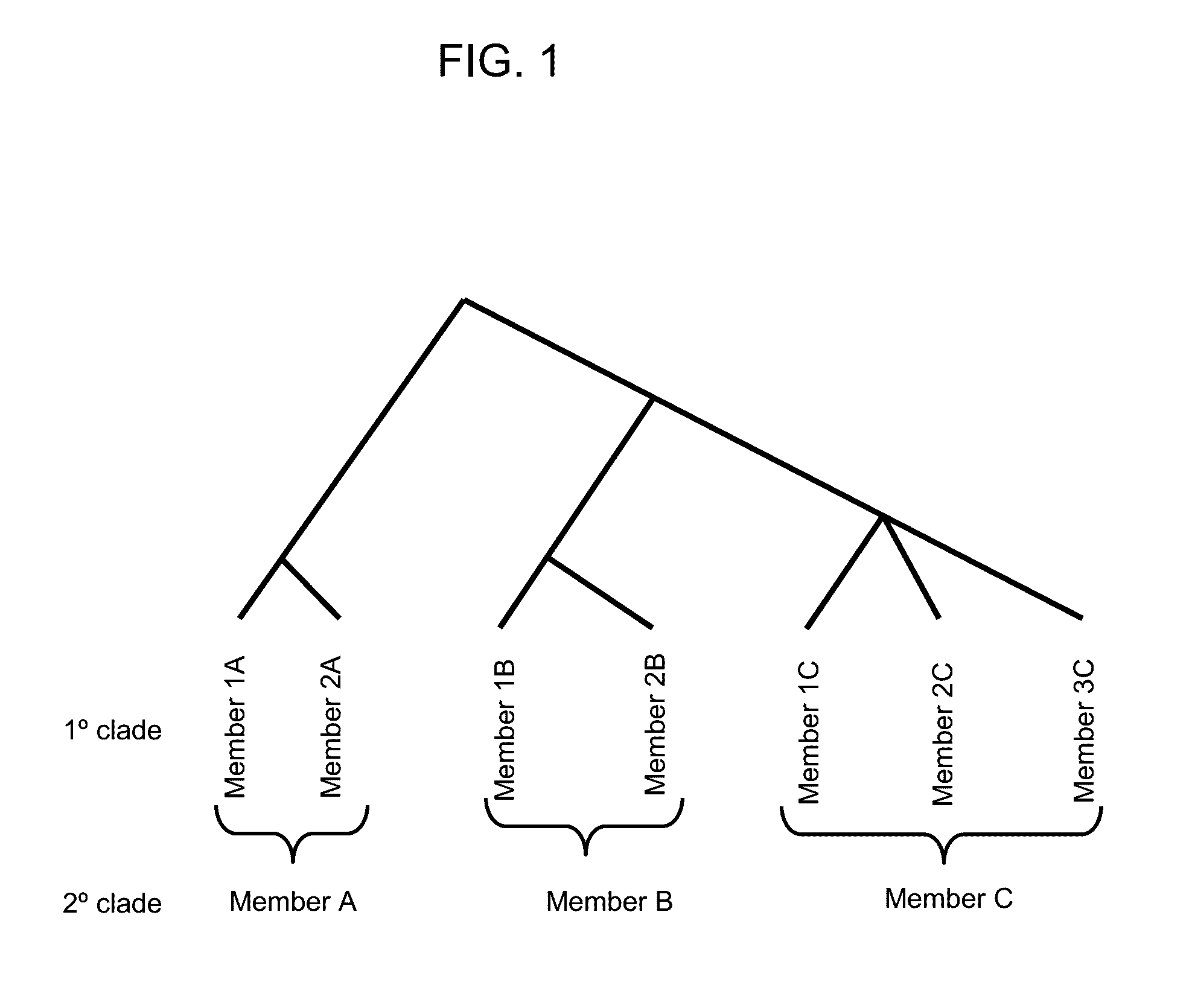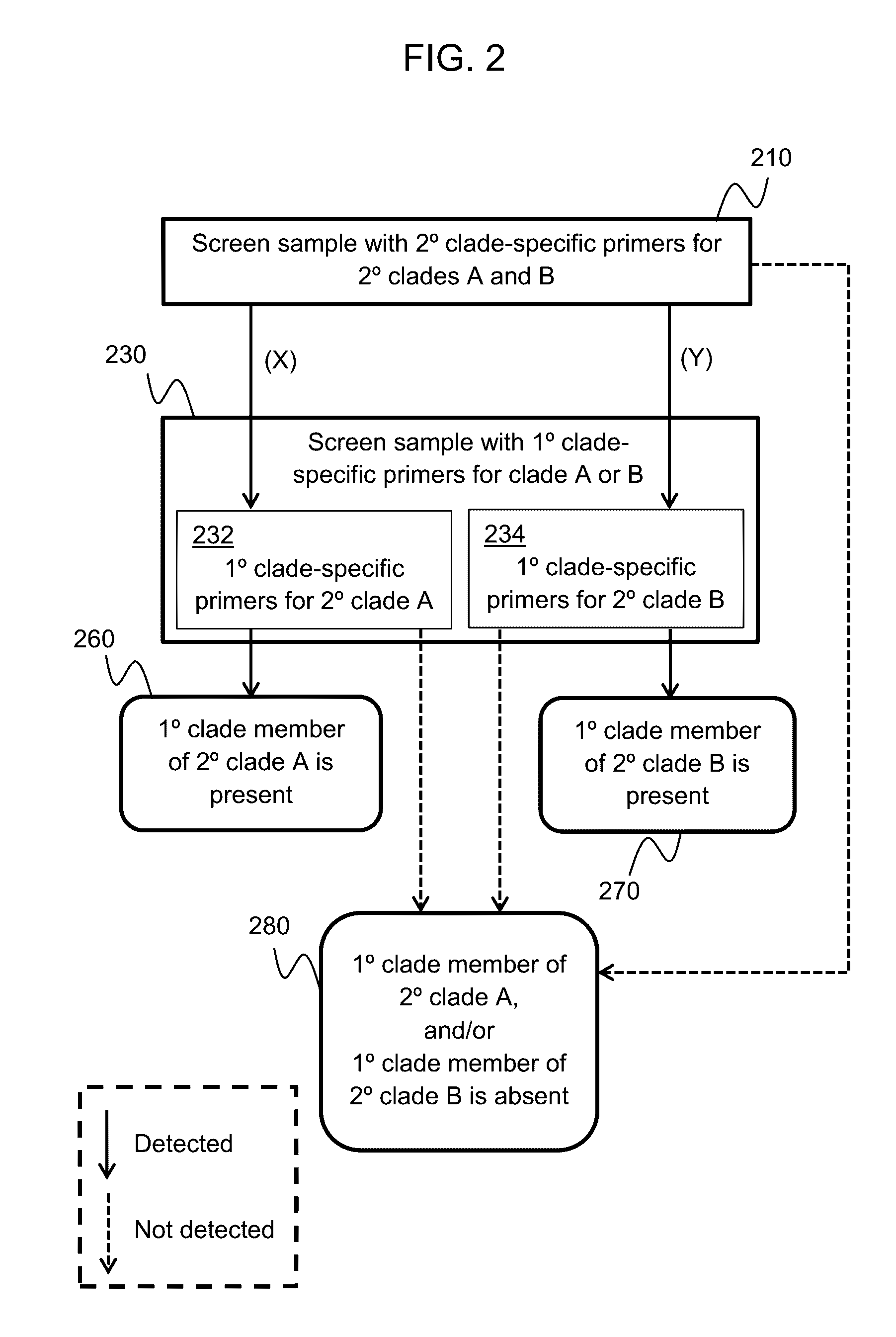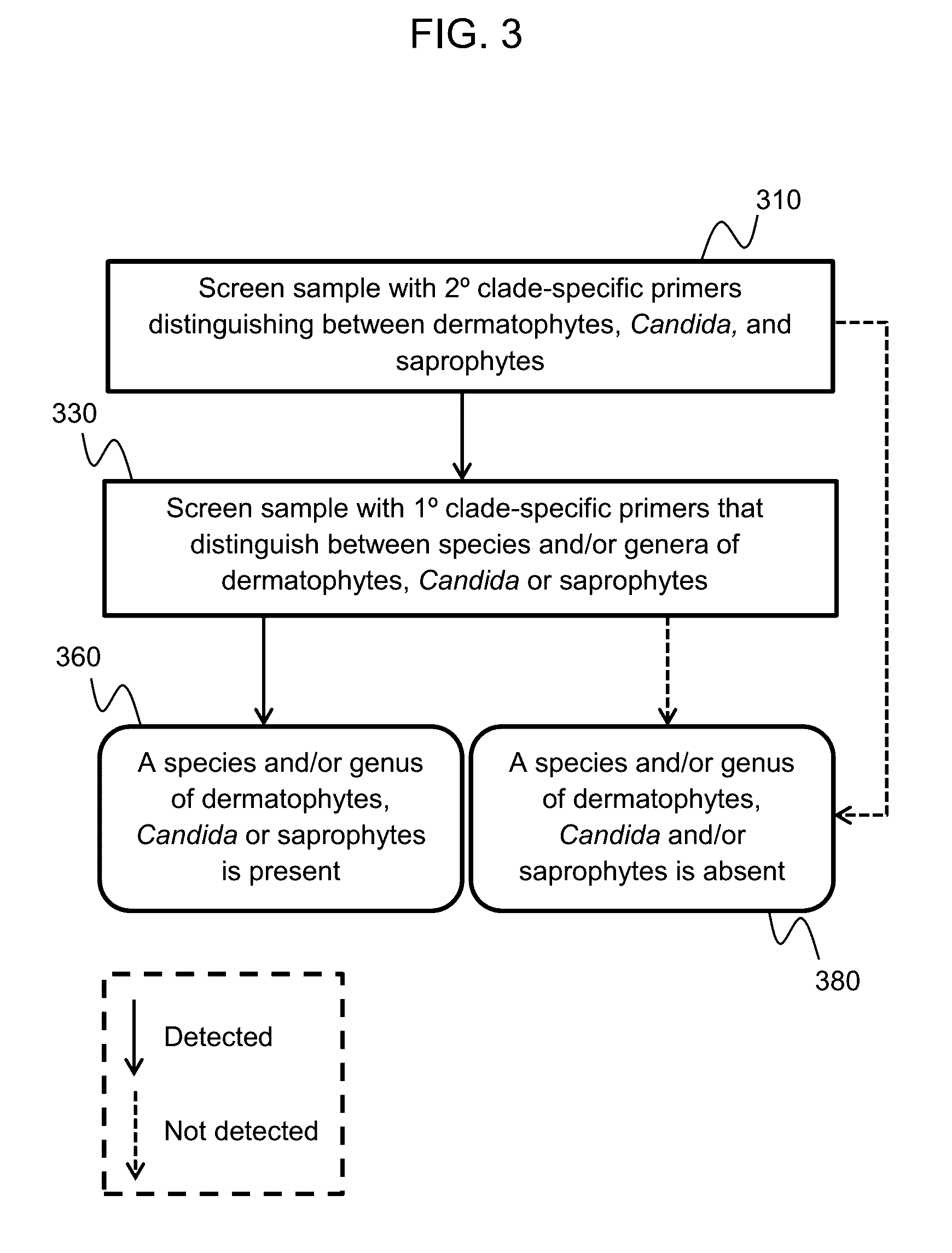Methods of screening for onychomycotic fungi
- Summary
- Abstract
- Description
- Claims
- Application Information
AI Technical Summary
Benefits of technology
Problems solved by technology
Method used
Image
Examples
example 1
Fungal Detection in Human Nails by Real Time PCR
I. Target Gene and Primer Sequences
[0349]Target organisms were identified by a literature search for onychomycosis etiology, and nail cultures. To assess the culture data, >17,000 consecutively accessioned culture-positive cases were reviewed. Gene sequences for target organisms were identified using the National Center for Biotechnology Information (NCBI) database and Basic Local Alignment Search Tool (BLAST®) “nucleotide blast” (nt / nr) query.
[0350]The 18S rRNA gene was used for PCR detection of fungi and yeast. Regions of the 18S rRNA gene are highly conserved among target organisms, thus allowing for amplification of multiple organisms with each primer pair. A database of rRNA consensus sequences for target organisms was constructed using Geneious® software, version 7.1.6 (Biomatters Ltd.).
[0351]Target regions for primer sequences were identified by identifying highly homologous regions among similar targets that were dissimilar to ...
example 2
Candida Identification in Human Nail by Real Time PCR
[0512]The “Candida Identification by PCR” assay described below was performed after the presence or absence of a Candida in a sample was determined using the “Fungal Detection by PCR” assay (Example 1).
[0513]I. Target Gene and Primer Sequences
[0514]Target Candida organisms were identified by a literature search for onychomycosis etiology, and nail cultures. To assess the culture data, >17,000 consecutively accessioned culture-positive cases were reviewed. Gene sequences for target organisms were identified using the National Center for Biotechnology Information (NCBI) database and Basic Local Alignment Search Tool (BLAST®) “nucleotide blast” (nt / nr) query.
[0515]Yeast mitochondrial sequences were used for C. albicans and C. parapsilosis identification. Regions within the NADH dehydrogenase subunit gene for C. albicans and putative reverse transcriptase gene for C. parapsilosis were identified by assessing unique regions of C. albic...
example 3
Report Showing the Results of a Fungal Detection Assay (Example 1) and Candida Identification Assay (Example 2)
[0604]Results of an assay for screening and identification of an onychomycotic fungal infection in a sample, as described in Examples 1 and 2, can be provided in a report, indicating the presence or absence of Candida, dermatophyte, or saprophyte, and / or the presence or absence of C. albicans and C. parapsilosis in the sample. Examples of such a report are provided in FIG. 39.
PUM
| Property | Measurement | Unit |
|---|---|---|
| Fraction | aaaaa | aaaaa |
| Electrical conductance | aaaaa | aaaaa |
| Electrical conductance | aaaaa | aaaaa |
Abstract
Description
Claims
Application Information
 Login to View More
Login to View More - R&D
- Intellectual Property
- Life Sciences
- Materials
- Tech Scout
- Unparalleled Data Quality
- Higher Quality Content
- 60% Fewer Hallucinations
Browse by: Latest US Patents, China's latest patents, Technical Efficacy Thesaurus, Application Domain, Technology Topic, Popular Technical Reports.
© 2025 PatSnap. All rights reserved.Legal|Privacy policy|Modern Slavery Act Transparency Statement|Sitemap|About US| Contact US: help@patsnap.com



